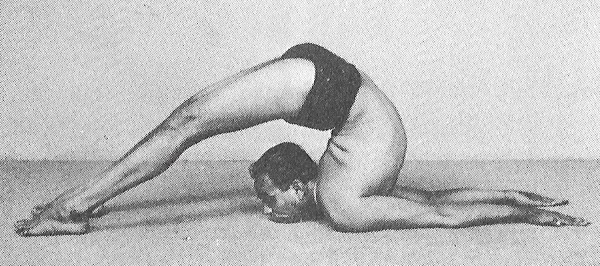If you are having trouble viewing this e-mail, click here for web version.
 |
Vrtti December 2021 - Yoga and Brain Health |
 |
|
Dear Yoga Friends, As a yogacentric sort of person, I consider yoga to be the ultimate mind-body discipline. But isn't almost all activity mind-body? Sure, your brain and body team up on pretty much everything. The difference lies in the degree of, focus, the level of sensitivity, and breath awareness. This narrows the scope to a list where yoga becomes a standout. Iyengar yoga, with its emphasis on asana and alignment, is sometimes erroneously pigeon-holed as a predominantly physical practice. B.K.S. Iyengar continually pushed back on this misconception. Asana is meditation in acton, pranayama is breathing meditation, and the practice as a whole ranges from physical to intellectual to emotional to spiritual. Lately I encounter more and more people doing crossword puzzles, sudoku, jigsaw puzzles, downloading puzzle apps, etc. to stave off declining brain function. Having reached a point in life where I frequently scare myself with forgetful behavior, this topic has my attention. The use-it-or-lose-it way of thinking makes sense, but solid research puts physical activity as important, if not more important, for brain health. And activities that fall in the category of mind-body disciplines appear to rank highest. A recent Harvard Medical School publication describes studies in which MRI scans show that yoga practitioners tend to have a thicker cerebral cortex and hippocampus, suggesting that yoga may counteract the tendency for brain function to decline with age. The article also mentioned that multiple studies confirmed that among relaxation techniques, yoga and music were the most effective for alleviating depression and anxiety. How about that? Patanjali, legendary author of the yoga sutras, is also the patron saint of dancers in India. Of course I had to take a peek at the recommended poses for brain health in B.K.S. Iyengar's Light on Yoga. Humbling, and at least at first, surprising! Two poses quite daunting to me were listed: Supta Kurmasana (resting tortoise), a relatively intense forward bend in which the legs are interlocked over the head and shoulders and the back is gently rounded, and Viparita Salabhasana (inverted locust), an intense back bend in which the chin and top chest rest on the floor while the legs come overhead scorpion-like to touch the floor beyond the head (if you squint it looks a little like halasana or plough pose). Although I can't do either of these poses remotely close to the finished form, the message is clear that brain health can be addressed via poses ranging from a quieting, drawing-inward asana, to a spine-energizing, full-on back-bend. So Iyengar yoga, with its variety of poses that energize the spine, quiet the senses, and favorably readjust our mood, offers a path to a healthier brain. In no way am I taking away from diets, puzzles, or apps, but let's keep up the practice and compare notes after our next cerebral cortex MRI's! Namaste, Chad ------------ * Classes at IYISF: 12:15-1:15pm Tuesdays (lunchtime yoga, livestream) & noon-1:30pm Thursdays (intermediate, hybrid in-person/livestream) |
|
|


